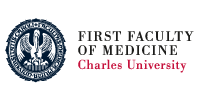The 22nd edition of Harrison’s Principles of Internal Medicine is now completely available online for the 1st Faculty of Medicine, Charles University!
Each chapter can be downloaded in PDF format, shared on social media or via email. The text can be read aloud via ReadSpeaker and images, graphs and tables can be downloaded. The online version contains more than 3,000 clinical, pathological and radiographic photographs, diagnostic and therapeutic decision trees and clear diagrams and diagrams illustrating pathophysiological processes. In addition, there are a number of atlases (e.g. Atlas of Cardiac Arrhythmias, Atlas of Skin Manifestations of Internal Disease, Atlas of Rashes Associated with Fever, etc.) and several case studies (Cases).
You will also find a number of exclusive chapters and videos (Multimedia). Harrison’s High Yield Key Points – key summaries of selected chapters are new.
New chapters:
The Value of the Physical Examination in Modern Medicine
Physician Well-Being, Exercise Intolerance
Primary and Secondary Hemophagocytic Lymphohistiocytosis
Symptom Control in Patients with Cancer
Principles of Immunization
COVID and Other Coronavirus Infections, Desensitization
Point-of-Care Ultrasound
Placebo and Nocebo Effects
Bedside Examination Tests in the Patient with Low Back Pain
Antithrombotic Therapy in Adult Patients
etc.
Additional resources are also available for students and educators:
Harrison’s Review Questions – over 1,200 practice questions and answers covering the full breadth of internal medicine, providing an excellent tool for student preparation and knowledge, updated regularly
Harrison’s Podclass – highly informative discussions on key topics in medicine, led by Charles Wiener and Cathy Handy Marshall
Textbook updates – updates and news
Harrison’s is world-renowned as the most authoritative source for:
Descriptions of disease mechanisms and how physicians can use this knowledge to best care for patients and optimally diagnose and treat specific diseases
Clear, concise diagrams that facilitate differential diagnosis for effective decision-making in complex real-world clinical cases
The physiological and epidemiological basis of signs and symptoms, described by experts and linked to subsequent chapters dedicated to specific diseases
Updated clinical trial results and recommended guidelines
ad.





